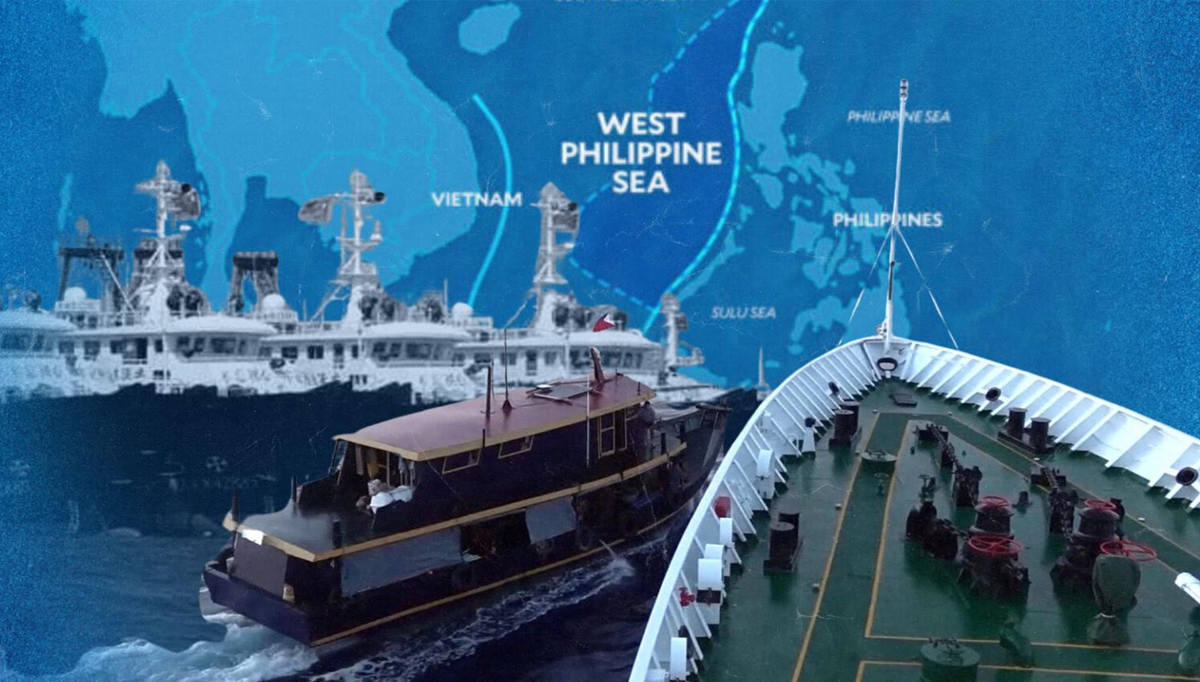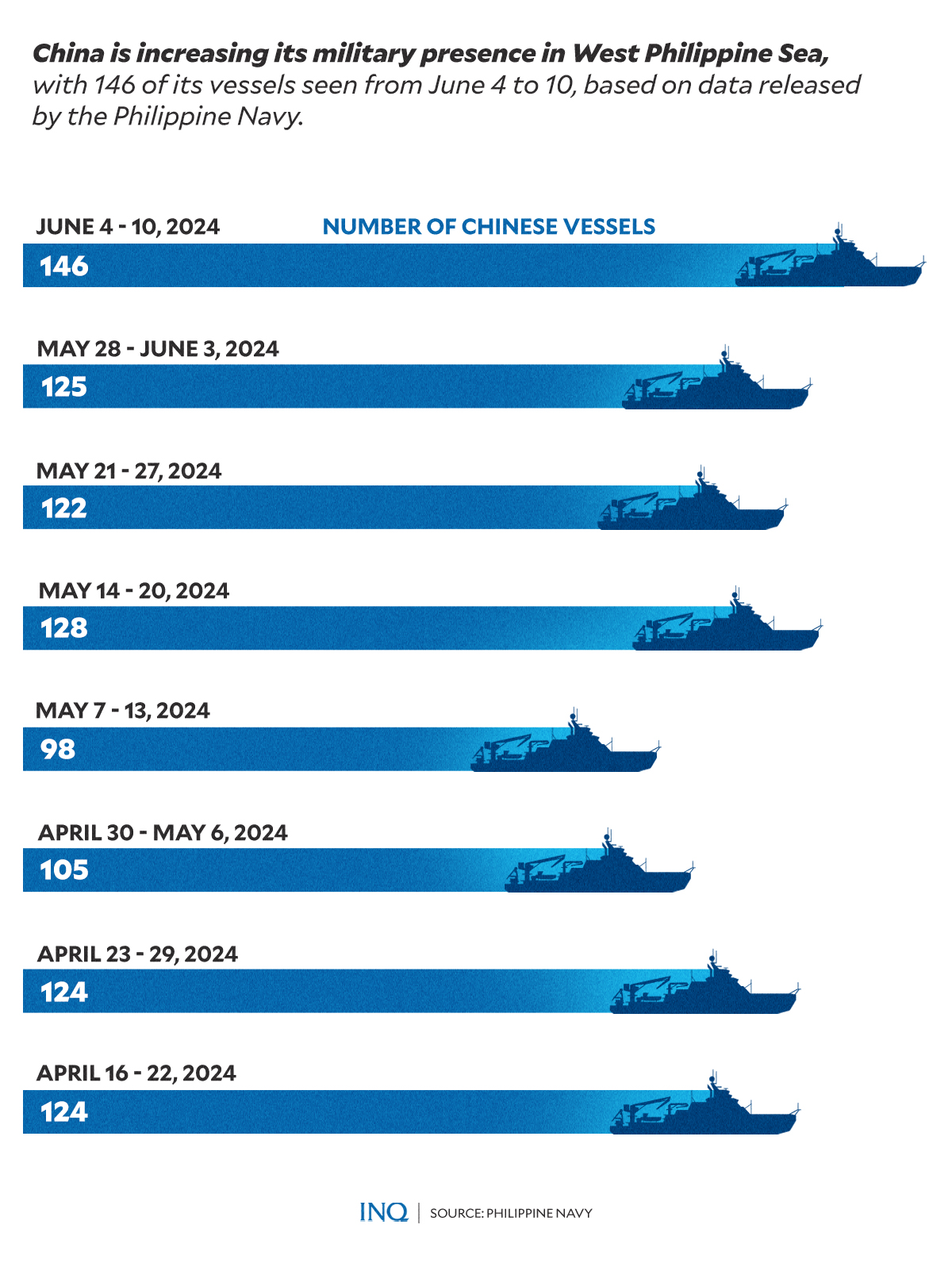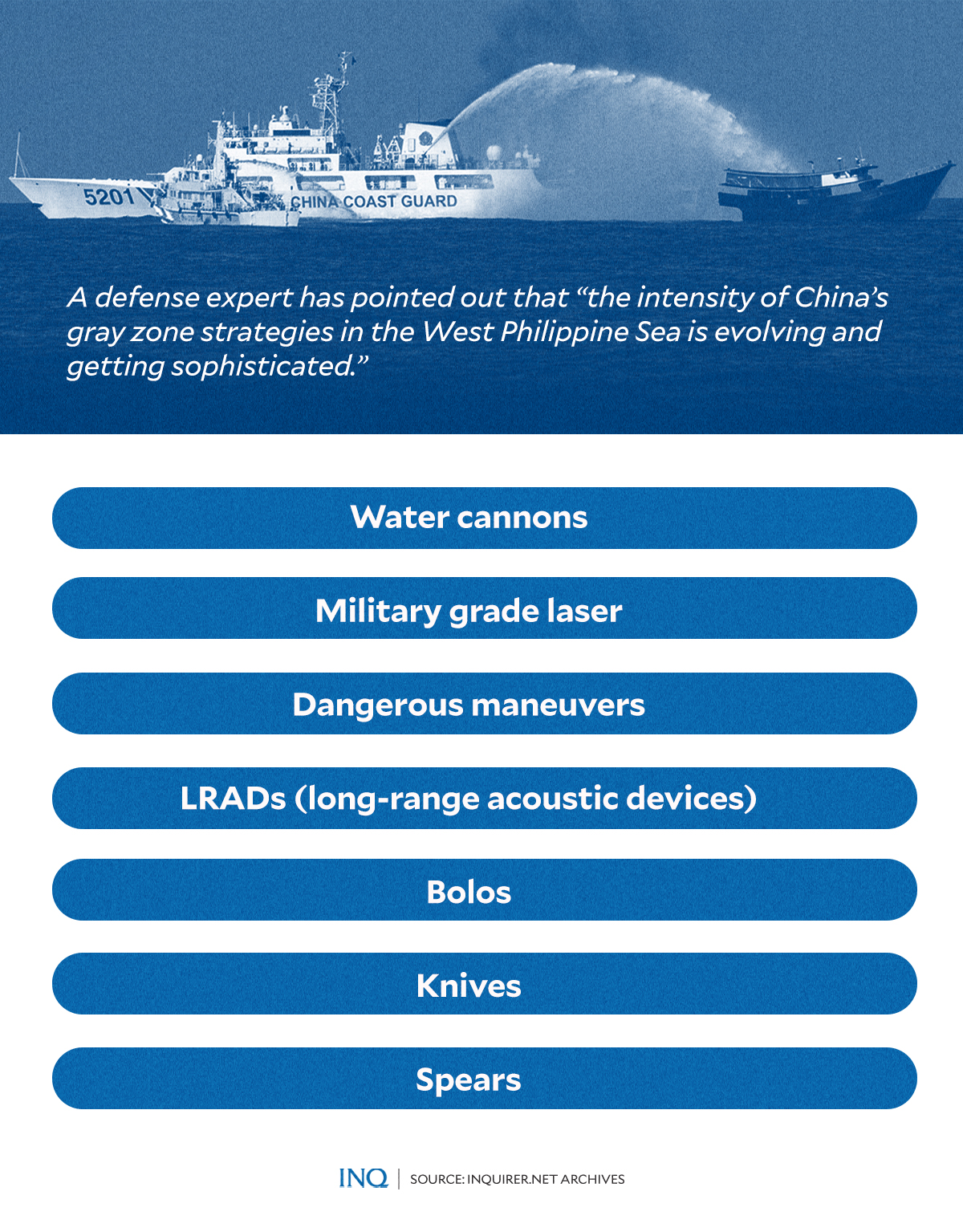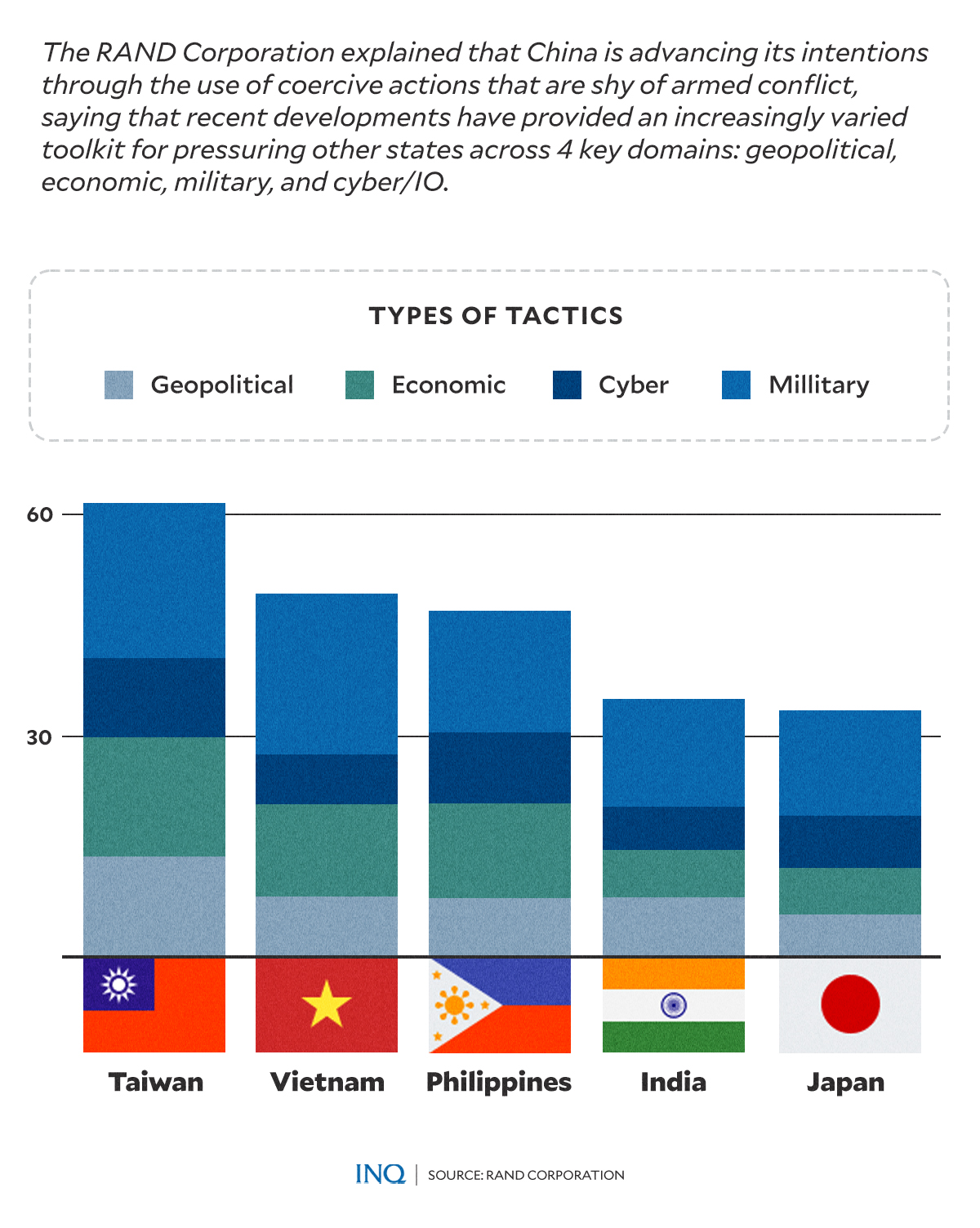MANILA, Philippines—While still outside the definition of outright war, China’s attacks against the Philippines point to just one end game which is complete control of the West Philippine Sea (WPS) and other areas in South China Sea (SCS) that the Asian behemoth claims to own.
A geopolitical analyst, Don McLain Gill, said complete control of SCS, which includes WPS, would provide China with advantage in energy supply and geopolitical dominance.
He told INQUIRER.net that China’s ultimate goal is to keep Association of Southeast Nation (ASEAN) states in tow while walling off the rest of regional powers in Indo-Pacific.
China, Gill said, “does not want to be restricted by any rules or by any country.” In short, it wants to rule over the area.
But how?
As pointed out by defense analyst Joshua Espeña, China’s intention is “to render the Philippines a useless actor in its push for the First Island Chain by imposing fait accompli moves in the WPS with its gray zone tactics.”
Look back at how China deployed civilian forces like its coast guard, as well as maritime militias, to gradually surround islets and control WPS to put in place fait accompli, or mission complete.
Based on data from the regional monitoring group Asia Maritime Transparency Initiative (AMTI), China has at least 30 outposts in the SCS, occupying six reefs that are all inside WPS, which are also inside the Philippines’ exclusive economic zone (EEZ).
AMTI said China also controls Scarborough or Panatag Shoal, which lies off the coast of Zambales province. It was “seized” by China in 2012 through the “constant presence” of its coast guard.
A decade after that, there’s no end in sight to the Chinese occupation of the area. According to Philippine Navy (PN) data, China is even doubling down on its presence in Panatag. At least 146 Chinese vessels were there last June 4 to 10, way higher than 124 on April 16 to 22.
Cryptic
Gray zone tactics, which are coercive actions that are shy of armed conflict but beyond normal diplomatic and economic activities, are now widely recognized as instrumental in China’s aggression.
READ: Confronting China’s ‘gray zone’ tactics
The US think tank RAND Corporation said in its research brief “Understanding and Countering China’s Gray Zone Tactics” that China views gray zone activities as a “natural extension of how countries exercise power.”
“These activities are a way to pressure countries to act according to Beijing’s interests—advancing its domestic, economic, foreign policy, and security objectives—without triggering backlash or conflict,” the RAND briefer said.
READ: PH should not fall for China’s ‘gray zone trap’ – maritime security scholar
As RAND pointed out, China’s use of gray zone tactics mirror dictator Xi Jin Ping’s “overarching domestic, economic, foreign policy, and security objectives in the Indo-Pacific, which Beijing views as China’s priority region.”
“Gray zone activities balance China’s pursuit of a more favorable external environment by altering the regional status quo in its favor with a desire to act below the threshold of a militarized response from the US or China’s neighbors,” it said.
No war needed
RAND said that over the past decade, China already employed close to 80 different gray zone tactics across all instruments of its power against the Philippines, Taiwan, Japan, Vietnam and India.
Last month, China even acted like “pirates” in its attack against the PN in Ayungin, or Second Thomas Shoal. The China Coast Guard (CCG) “illegally boarded” Filipino vessels, wielding bolos, knives, and spears.
READ: AFP chief: China Coast Guard used bolos, acted like pirates
As pointed out by Chester Cabalza, a defense analyst, the intensity of China’s gray zone tactics in the WPS is evolving and getting sophisticated with the introduction of weapons like military-grade lasers and powerful water cannons.
READ: China hits PH boats anew with water cannon blasts
RAND said China layers the use of several of its gray zone tactics to exert pressure, especially on issues related to China’s core interests, mainly its goal to have unrestricted control of SCS.
As stressed by the Barcelona Centre for International Affairs, gray zone is giving China a way to win without actual armed combat.
RAND said recent developments have provided China an increasingly varied toolkit for pressuring other states across four key domains: geopolitical, economic, military, and cyber/IO.
“Combining multiple geopolitical, economic, military, and cyber/IO activities mean that China no longer has to rely on significant escalation in any single domain and, if needed, can sequence actions to apply pressure in nonmilitary domains before resorting to use of military activity,” said RAND in its briefer.
Over the years, it said that China employed the most varied of tactics against Taiwan, Vietnam and the Philippines. It appeared more cautious vis-à-vis large countries, like Japan and India.
Show off
Based on a new report by the think tank Center for Strategic and International Studies (CSIS) on the conflict between China and Taiwan, while a lot of attention has been paid to the threat of an invasion, China can get Taiwan back even without firing a single bullet.
CSIS said that one way China could take Taiwan is a gray zone quarantine led not by its People’s Liberation Army but by the CCG and the rest of its law enforcement forces and maritime militia.
“Rather than sealing off the island, a quarantine would aim to demonstrate China’s ability to exert control over Taiwan,” it said, pointing out that a quarantine would be more feasible for China and more likely than an invasion or blockade.
READ: China steps up grey-zone warfare to exhaust Taiwan, defense report says
The report “How China Could Quarantine Taiwan: Mapping Out Two Possible Scenarios” stated that the gray zone quarantine would likewise present new challenges, especially on how Taiwan, the US, and the rest of the international community can respond.
“A key goal is to compel countries and companies to comply with China’s terms,” it said, stressing that if foreign actors would comply, the quarantine would “strengthen China’s narrative that it has control over Taiwan and weaken Taipei’s sovereignty claims.”
READ: China may be surveying Benham Rise to study Taiwan ‘entry’ — expert
Still no certainty
While successful implementation of the possible quarantine would set a precedent that would make it easier for China to carry out more operations, everything will not be easy for Beijing as Taiwan’s international relations with the community of nations is complex.
As pointed out by Cabalza, president of the think tank International Development and Security Cooperation, “Taipei is close with Tokyo and Washington in maintaining their self-ruled governance and national security.”
For the CSIS, while China has capabilities to successfully execute a possible quarantine, the implementation “would require operations that are far more complex than anything China demonstrated to date.”
It said such moves would carry significant risk for China, and its success would depend to a large degree on how Taiwan, the US, and other countries respond: “Even if successfully implemented, there are limits to what a quarantine can achieve,” CSIS said.
“If Beijing’s goal is to inflict enough pain to force Taiwan’s surrender, China would need to move beyond the gray zone into overt military action,” it said as it stressed that a military blockade would be a key option for China.
PH has to be prepared
As to the case of the Philippines, while Cabalza said that a quarantine is not applicable since the Philippines is a sovereign state recognized by all member states of the United Nations, the country still has to be prepared for maritime skirmishes.
For Espeña, China “may have motives to contain the Philippines and claim the First Island Chain on its own, but the Philippines is not an island; there are various chokepoints that they must close to quarantine the archipelago.”
“While the exclusive economic zone is where China can freely execute its gray zone tactics, conducting naval quarantine requires going into the territorial sea, which is a direct violation of Philippine sovereignty and territorial integrity,” he said.
But while this is a two-edged sword, Espeña told INQUIRER.net that the Philippines should take such scenarios seriously, saying that the Philippines “was outmaneuvered for the past years.”
“Operationalizing the Comprehensive Archipelagic Defense Concept should be a serious business that requires an arsenal of fixed and rotary-wing crafts, surface vessels, and coastal-based missile systems to deny and punish Chinese moves to establish a quarantine,” he said.
As the Philippines is trying to internationalize the issue on the WPS, especially through recalibrated alliance with the US, it now seems to be counterchecked by China’s more dangerous contour of gray zone tactics.
Why? As Espeña said, China’s goal is to exhaust the Philippines and weaken its linkages so that it can isolate and capitulate Manila from the game and eventually access the WPS without restrictions.





